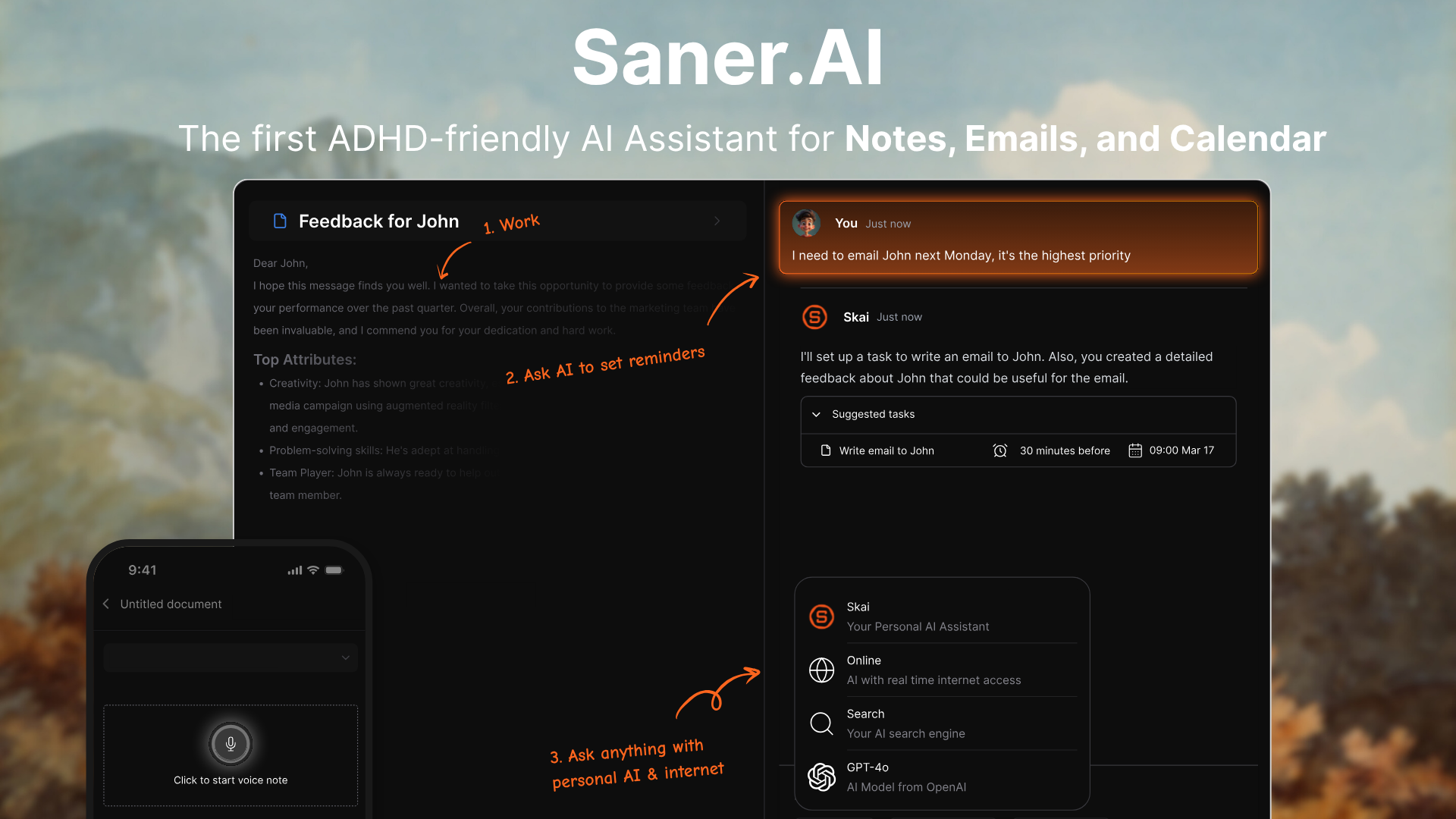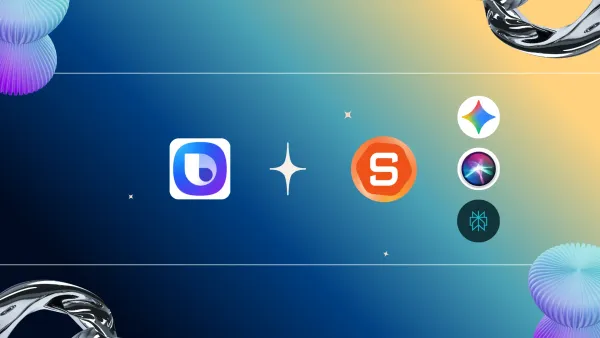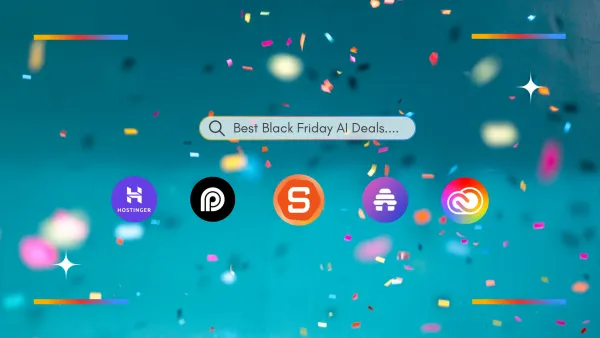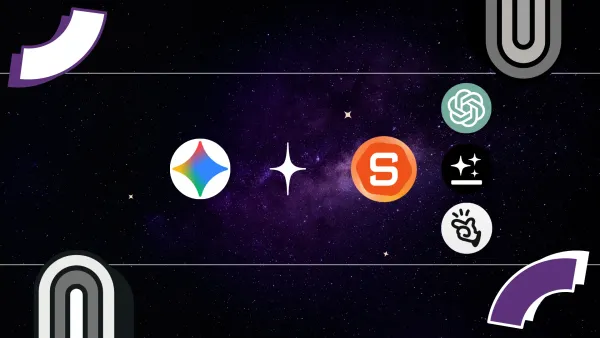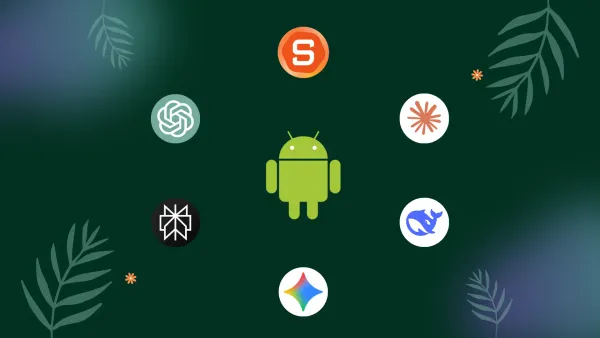The Second Brain: Your Dynamic Door of Memory [2025 Guide]

Stressed with Information Overload? Get a Second Brain

Imagine never forgetting an important idea, insight, or resource again. That’s the promise of the Second Brain - a trusted system outside your head that helps you store, connect, and retrieve everything that matters. Coined by productivity expert Tiago Forte, a Second Brain is more than a note-taking tool - it’s a digital extension of your mind that turns scattered thoughts into organized knowledge.
In today’s noisy world, where information overload and distraction are the norm, a Second Brain helps you stay mentally clear and focused. It’s especially powerful for entrepreneurs, researchers, creators, and people with ADHD, who often juggle multiple projects, ideas, and tools at once.
This comprehensive guide will walk you through:
- What a Second Brain is (and what it isn’t)
- The best Second Brain tools for 2025
- How to build your own Second Brain step by step
- Use cases for work, creativity, and ADHD management
- Tips, templates, and best practices for long-term success
Let’s dive in.
What Is a Second Brain?

At its core, a Second Brain is a personal knowledge management (PKM) system that helps you store, connect, and use ideas over time.
Unlike simple to-do apps or digital notebooks, a Second Brain is built for thinking. It’s a way to externalize memory, reduce mental clutter, and make better decisions by having your best insights just one click away.
Benefits of Having a Second Brain:
- Mental clarity and reduced overwhelm
- Better decision-making with organized knowledge
- Creative breakthroughs from synthesizing ideas
- Productivity without relying on memory alone
- Long-term content creation and business asset development
How a Second Brain Works
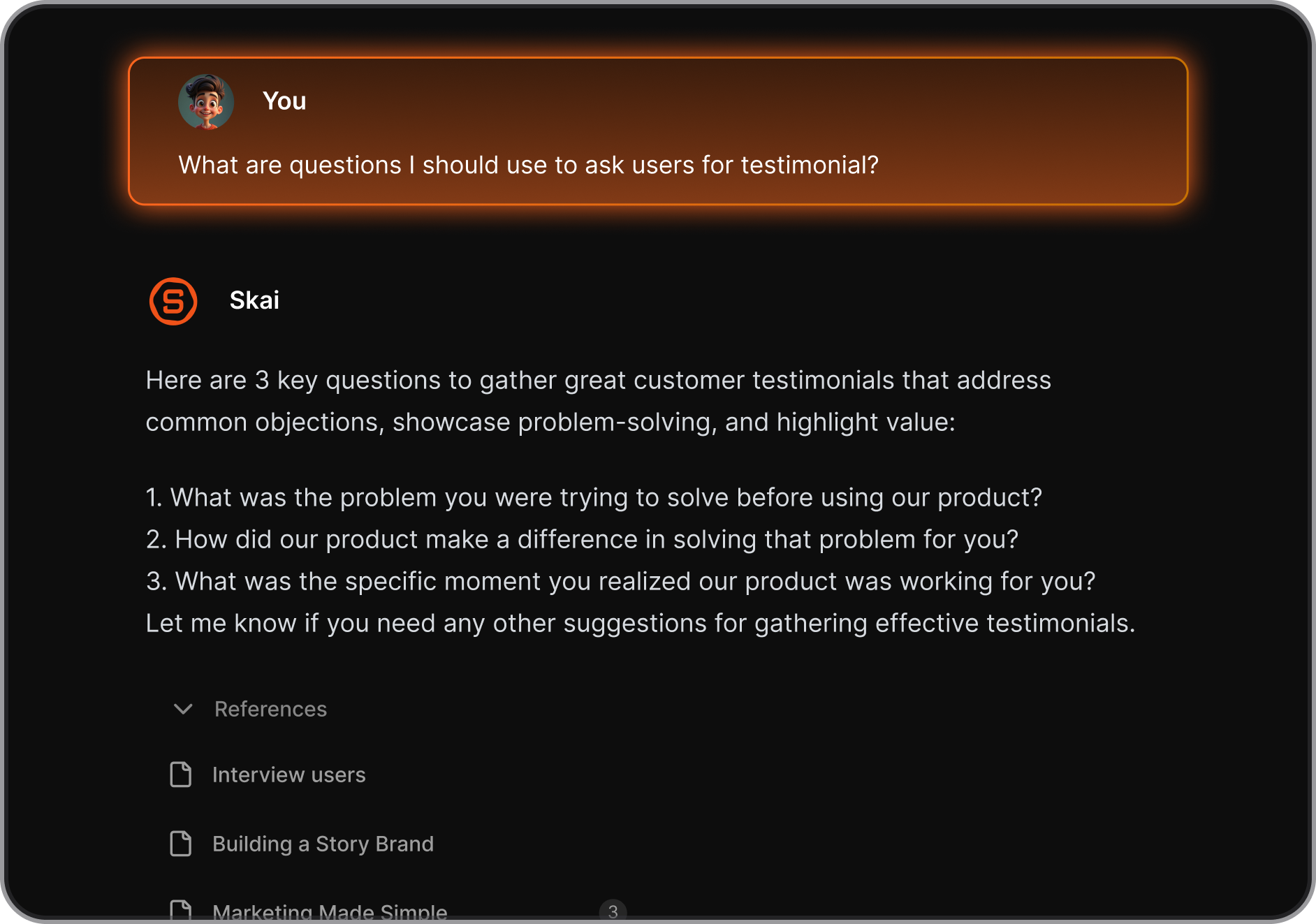
The most common method for building a Second Brain follows the CODE framework:
🔍 Capture: Save ideas, notes, highlights, and resources from books, meetings, podcasts, etc.
🗂 Organize: Group them by actionability, topic, or projects—using folders, tags, or linking.
💡 Distill: Refine and highlight the key points so you can find value later.
🚀 Express: Turn insights into output: writing, content, decisions, or action.
Tools Often Used:
- Notion (all-in-one workspace)
- Obsidian (markdown & linking)
- Saner.AI (AI-powered Second Brain for ADHD & researchers)
- Evernote, Tana, Logseq, Capacities
Mindset Shift: A Second Brain isn’t about remembering everything—it’s about offloading mental weight so you can think freely and creatively.
Types of Second Brain Systems
1. Digital Second Brains
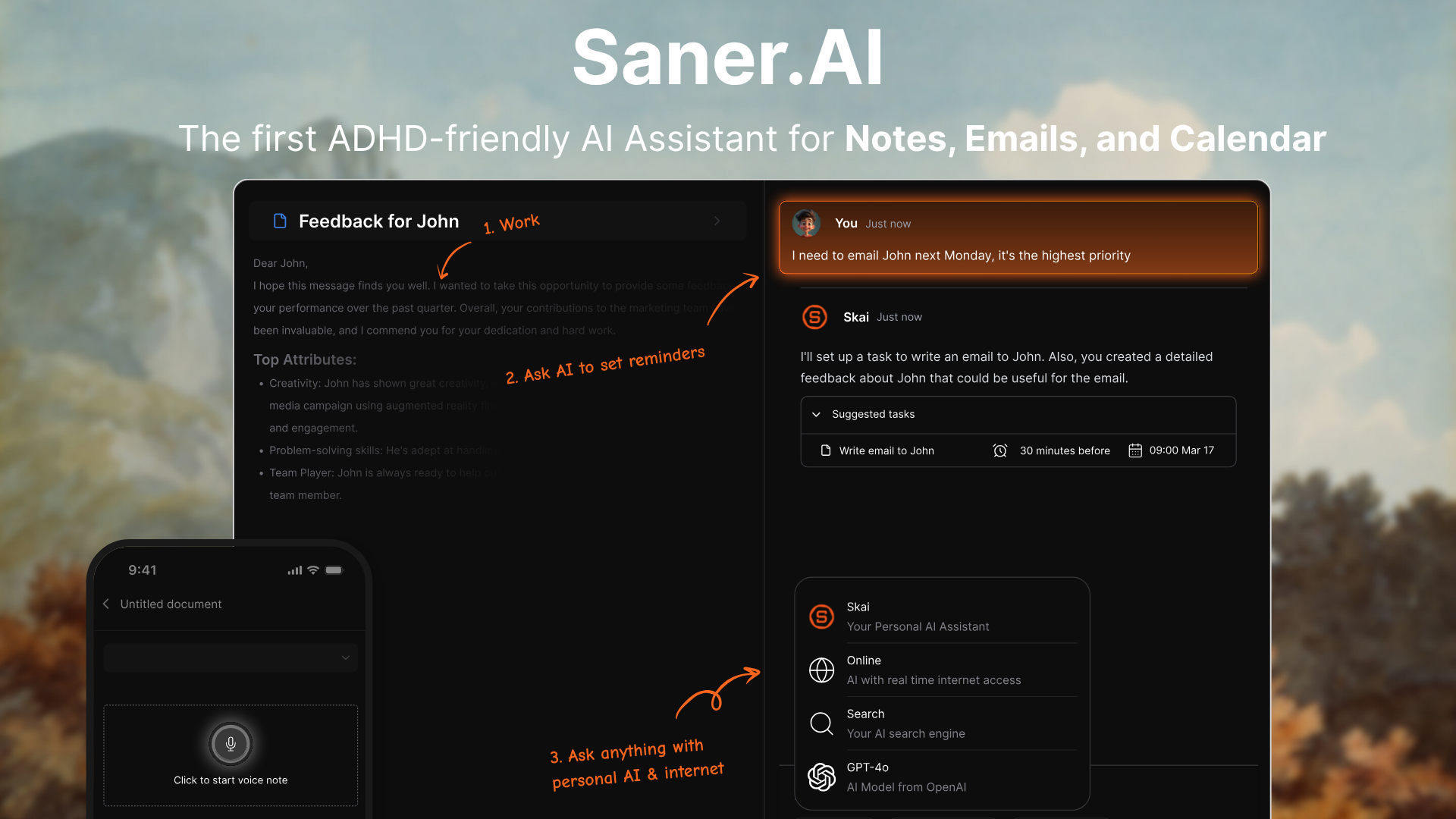
- Notion: Best for visual organization and databases
- Obsidian: Best for linking and networked thought
- Saner.AI: Best for ADHDers, researchers, and AI-assisted synthesis
- Evernote: Classic note app, still works well for simple use cases
- Tana, Logseq, Capacities: Newcomers focused on dynamic linking
2. Analog Second Brains
- Bullet journals
- Index card systems
- Zettelkasten (paper version)
3. Hybrid Systems
- Combine digital and physical tools
- Good for those who like to think on paper but want digital storage
4. By User Type:
- ADHD: Tools like Saner.AI reduce friction and context switching
- Entrepreneurs: Use Second Brains for decision logs, idea capture, strategy
- Students & Researchers: Ideal for synthesizing reading material
- Creators: Store inspiration, build content pipelines
Popular Second Brain Apps Compared
| Tool | Best For | Unique Feature | ADHD Friendly |
|---|---|---|---|
| Notion | Visual planning | Databases & templates | 🟡 Medium |
| Obsidian | Deep thinkers & writers | Markdown + bidirectional linking | 🟡 Medium |
| Evernote | Simple note-takers | Web clipping | 🔴 Low |
| Tana | Dynamic thinkers | Node-based knowledge graph | 🟡 Medium |
| Saner.AI | ADHDers & researchers | AI memory + context synthesis | 🟢 High |
| Logseq | Zettelkasten enthusiasts | Outliner + backlinks | 🟡 Medium |
| Capacities | Visual second brain users | Media-rich, daily note structure | 🟡 Medium |
How to Build Your Own Second Brain
Here’s a practical guide to setting up your Second Brain:
Step 1: Choose Your Tool
- Want visual organization? → Notion
- Prefer backlinks and daily notes? → Obsidian
- Need ADHD-friendly AI? → Saner.AI
- Like a paper trail? → Hybrid or analog Zettelkasten
Step 2: Set Up Your Structure
- Create folders for Projects, Areas, Resources, and Archives (PARA method)
- Add tags or links for easy cross-referencing
- Use templates for common notes (meeting notes, book summaries, etc.)
Step 3: Capture Daily
- Save highlights from Kindle, articles, meetings, etc.
- Use AI tools or browser extensions to speed this up
Step 4: Review Weekly
- Revisit notes
- Refine and link related ones
- Delete or archive irrelevant info
Step 5: Express
- Turn insights into content, decisions, writing, or strategy
Best Practices for Second Brain Success
- Start small: Don’t over-architect. Just begin capturing.
- Review regularly: Weekly reviews help you reflect and refine.
- Avoid perfectionism: It’s not about beauty—it’s about usability.
- Integrate AI: Tools like Saner.AI help summarize, organize, and connect thoughts for you.
- Personalize your workflow: Your Second Brain should reflect how you think, not how others do.
Second Brain FAQ: Everything You Need to Know
1. What is a Second Brain?
A Second Brain is a digital system that helps you remember, organize, and use the information in your life. It's like an external version of your brain - built to capture your thoughts, ideas, tasks, and notes so you don’t have to rely on memory.
At its best, a Second Brain helps you:
- Recall past notes instantly
- Connect scattered thoughts into insights
- Turn ideas into actions
- Stay organized without extra mental load
Popular tools used as a Second Brain include Saner.AI, Notion, Obsidian, and Roam Research. Saner.AI takes it a step further by combining AI understanding with natural workflows - perfect for those who move fast and think even faster.
2. What can a Second Brain do?
A good Second Brain isn’t just a note app—it’s a thinking partner. Core capabilities often include:
- Capture anything – Ideas, tasks, bookmarks, voice memos
- Smart search – Find what you meant, even if you forgot the keywords
- Link thoughts together – Make connections across projects and topics
- Organize as you go – No need for folders or strict systems
- Surface what matters – Reminders, task nudges, and follow-up prompts
Tools like Saner.AI even auto-tag and summarize your notes so they’re useful later, even if you forgot you wrote them.
3. Why do people use a Second Brain?
Most people turn to a Second Brain because their actual brain is overloaded. Common reasons:
- You forget where you saved things
- You write notes but never revisit them
- You have ideas at the wrong time
- You bounce between apps and lose focus
A Second Brain brings it all together - so your ideas, research, and tasks live in one place and work for you.
4. What’s the best Second Brain tool?
It depends on your style:
- Saner.AI – Ideal for entrepreneurs, ADHD minds, and knowledge workers. Combines AI, notes, tasks, and calendar in one calm space.
- Obsidian – Great for networked thinking and markdown lovers.
- Notion – Flexible for teams and databases.
- Roam Research – Powerful for backlinking and idea exploration.
If you want a Second Brain that thinks with you (not just stores stuff), Saner.AI stands out for actionability.
5. How is a Second Brain different from a to-do list or note app?
Traditional tools are static - you input stuff, then have to remember to come back.
A Second Brain is dynamic. It:
- Organizes as you go
- Surfaces what’s relevant in context
- Connects notes, tasks, and meetings
- Helps you act, not just store
Think of it like this:
- Notes app = a drawer
- Second Brain = an assistant who opens the drawer when you need it
6. Can a Second Brain help with ADHD?
Absolutely. For people with ADHD, a Second Brain like Saner.AI is a game changer because:
- Reduces mental clutter and context switching
- Captures scattered ideas before they disappear
- Turns brain dumps into clear, actionable steps
- Nudges you to follow through without nagging
It’s like having a calm, consistent partner to help keep your mind on track.
7. How do I build a Second Brain?
You don’t need a complex system to start. Begin with:
- Capture – Write down anything on your mind (notes, tasks, ideas)
- Organize lightly – Use tags or smart AI tools like Saner.AI
- Review weekly – Revisit, connect, and reflect
- Use it daily – Search, plan, or journal through your Second Brain
Let it grow naturally with your needs. Tools like Saner.AI make this easier by handling the structure for you.
8. Do Second Brain apps use AI?
More and more do, you can check out our posts about the best AI second brain apps. AI makes your Second Brain:
- Smarter at searching
- Better at summarizing
- Faster at organizing
- More helpful when planning
Saner.AI uses AI to understand your notes, suggest tasks, and surface insights—without needing perfect inputs.
9. What’s the best Second Brain for professionals?
Professionals need a Second Brain that’s quick, reliable, and actionable. Saner.AI is built for this:
- Combines notes, tasks, and calendar in one view
- Understands natural language (e.g., “Find investor notes from Q1”)
- Helps prep for meetings, follow up, and plan ahead—without effort
If your work is fast-paced and information-heavy, Saner.AI becomes your edge.
10. Can a Second Brain help with personal growth?
Yes. Many use their Second Brain to track:
- Books and takeaways
- Journaling and reflections
- Fitness or habit logs
- Ideas and projects over time
It’s a space where you can think clearly and grow intentionally, because it remembers what you don’t.
Stay on top of your work and life with a Second Brain

